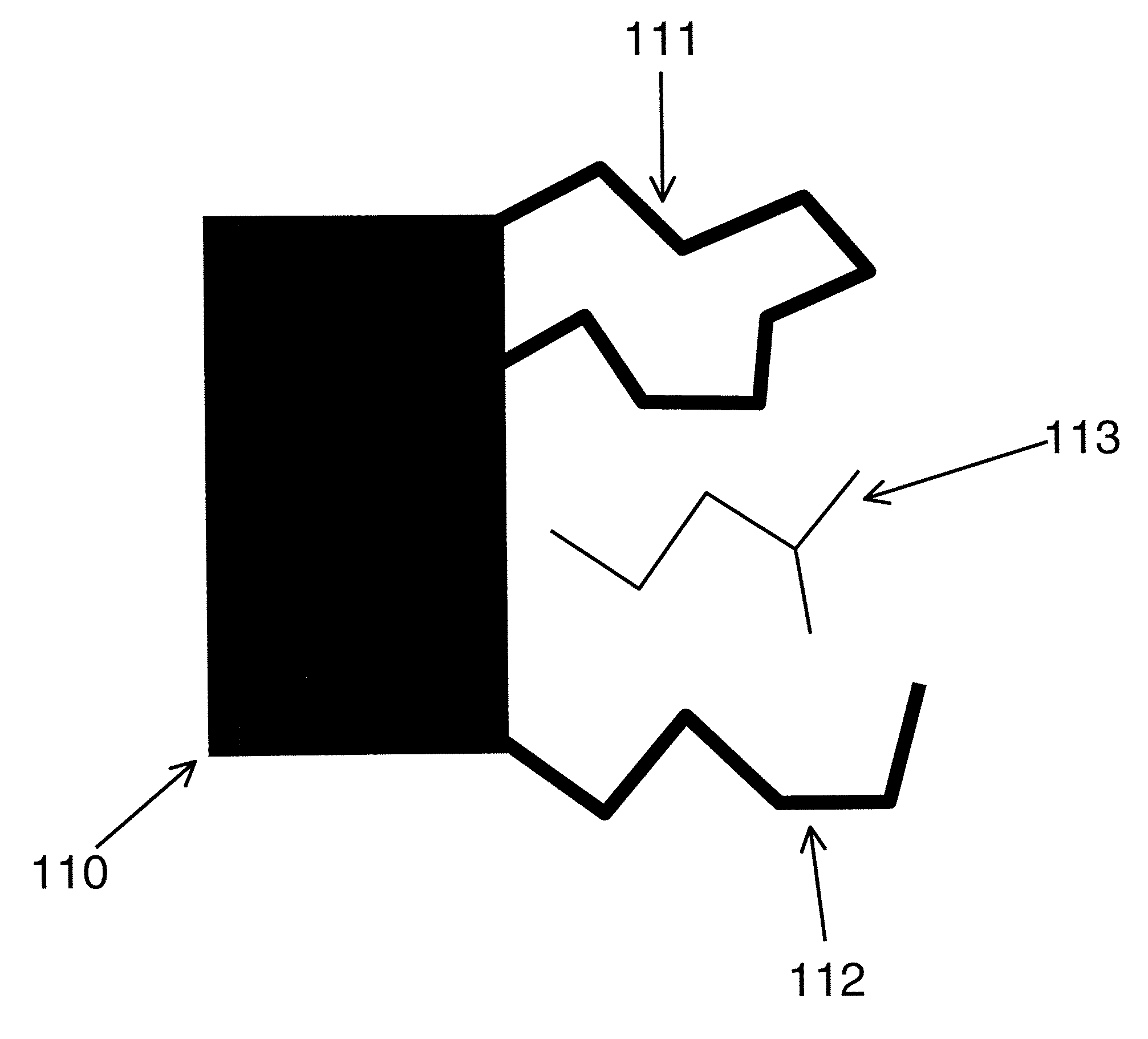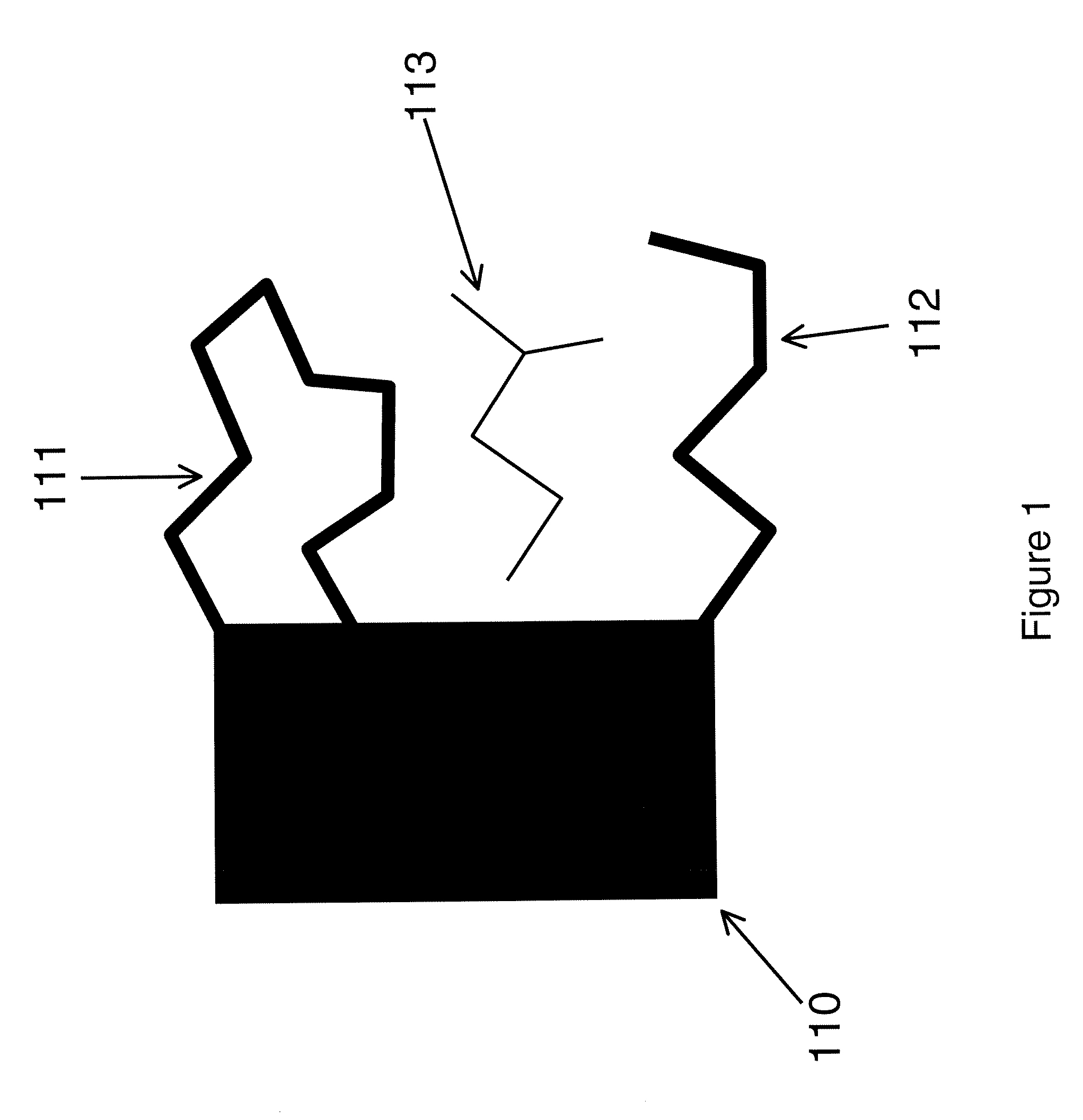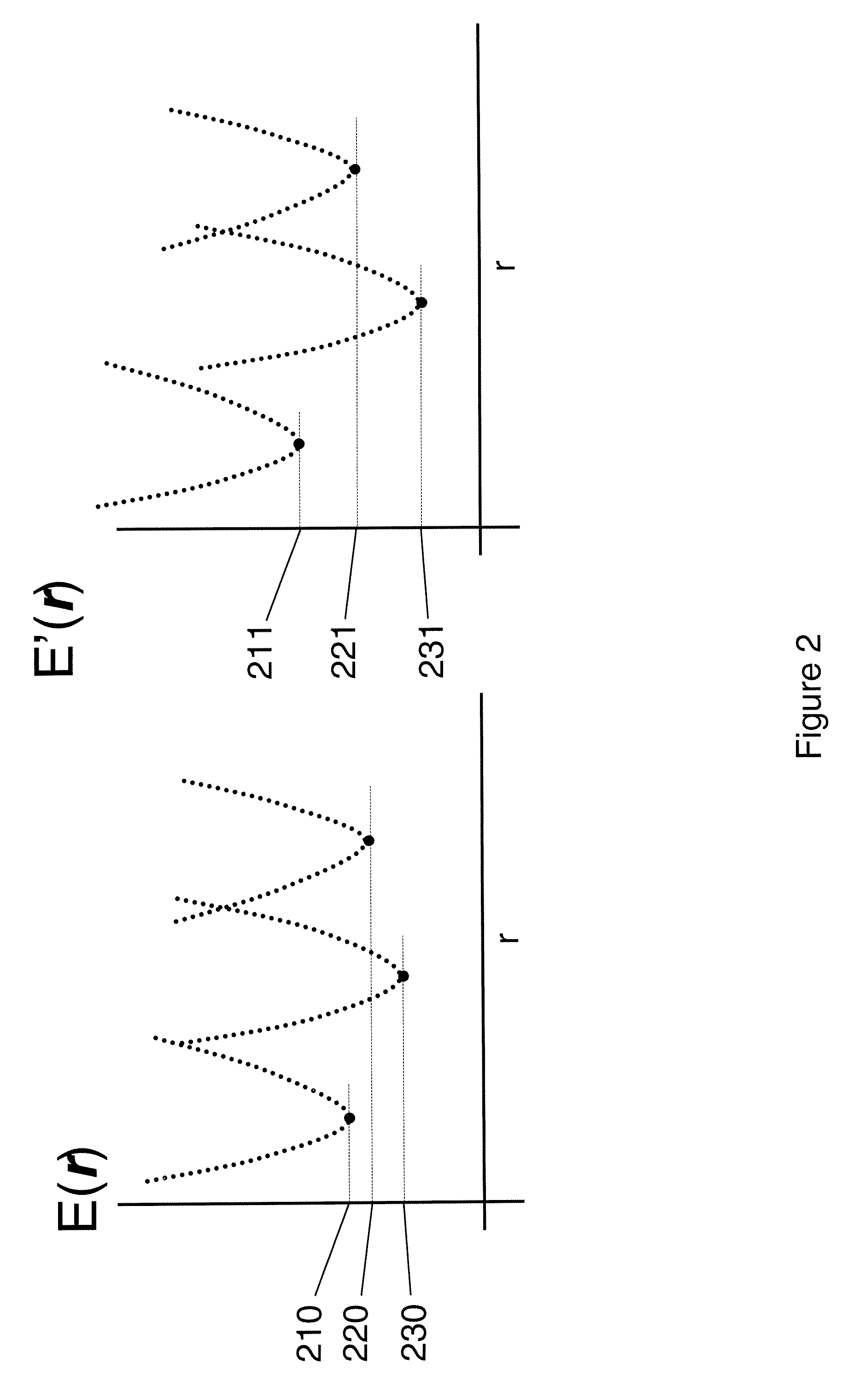Computational Method For Drug Discovery And Receptor Design
a drug discovery and receptor technology, applied in the field of biomedicine and chemistry, can solve the problems of erroneous or incomplete theoretical foundations, inability to accurately compute energy, and inability to fully realize the effect of quantum mechanical calculations, so as to speed up the discovery of targeted molecules
- Summary
- Abstract
- Description
- Claims
- Application Information
AI Technical Summary
Benefits of technology
Problems solved by technology
Method used
Image
Examples
Embodiment Construction
[0072]Definitions
[0073]The following terms, and the theoretical aspects of the present invention which they convey, are generally accepted by those skilled in the art. They are summarized here for the sake of clarity.[0074]Andersen factor: a factor similar to the Boltzmann and Mayer factors that is computed by separating the energy into a strongly repulsive part ER, typically associated with steric interactions, and a residual attractive part EA, such that the total energy E=ER+EA, and then formulating the Andersen factor as e−EA / (RGT)−e−ER / (RGT), where RG is the gas constant and T is absolute temperature.[0075]Boltzmann factor: the exponential of the energy E divided by either Boltzmann's constant or, as used here, the gas constant Rg, times the absolute temperature T: e−E(r) / (RgT), where E may also be separated into a potential energy part U and a solvation energy part W: e−(U(r)+W(r)) / )RgT).[0076]Bond-angle-torsion coordinates: a set of internal coordinates in which the location ...
PUM
 Login to View More
Login to View More Abstract
Description
Claims
Application Information
 Login to View More
Login to View More - R&D
- Intellectual Property
- Life Sciences
- Materials
- Tech Scout
- Unparalleled Data Quality
- Higher Quality Content
- 60% Fewer Hallucinations
Browse by: Latest US Patents, China's latest patents, Technical Efficacy Thesaurus, Application Domain, Technology Topic, Popular Technical Reports.
© 2025 PatSnap. All rights reserved.Legal|Privacy policy|Modern Slavery Act Transparency Statement|Sitemap|About US| Contact US: help@patsnap.com



